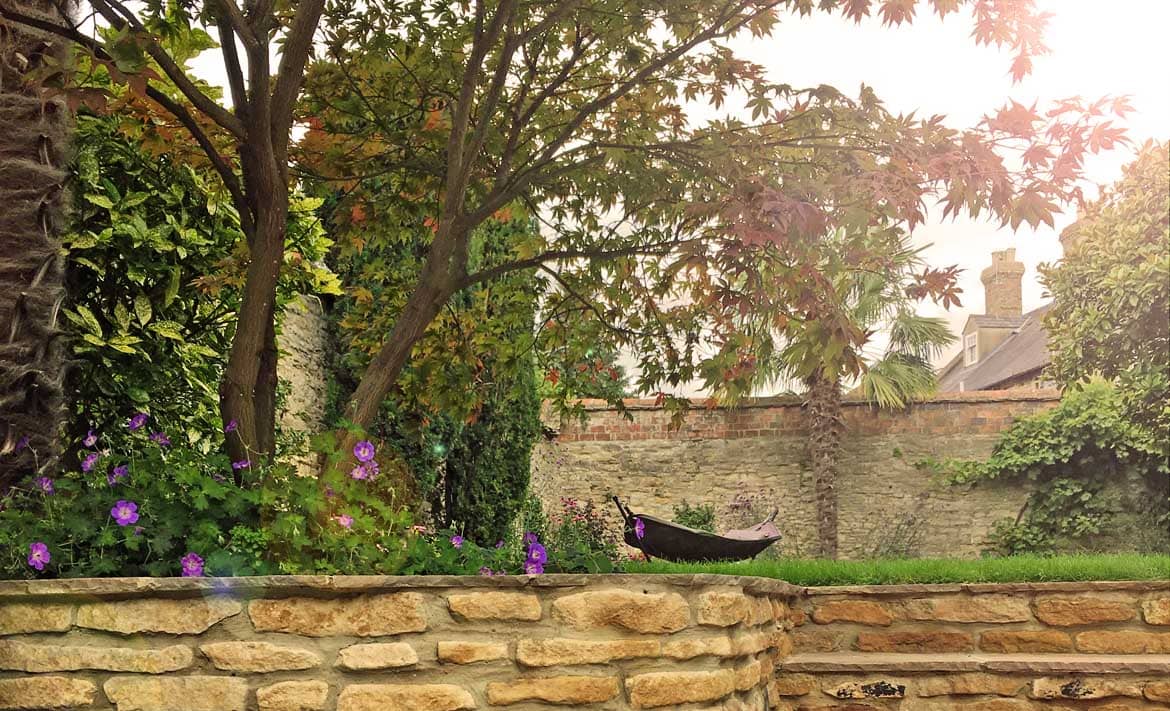Glancing through the glazed panoramas of widescreen doors, watching the tail-end of February outside, I can’t help but wonder whether anyone who reads this might find it disconnectedly premature to be thinking about the heady, hazy, lazy garden-days of high summer to come. And yet now is precisely the right time to plan and prep to get the garden summer-ready.
So, holding in mind the scent of sun-warmed sage and the vision of borders awash with colour and billowing texture, I set about quizzing the horticultural team on what they’ll be doing over the next couple of months to maximise the health and beauty of the gardens they care for, ahead of the growing season. Here’s a sneak peek at their busy schedule of pre-season prep, starting with the essentials of soil health, pruning and supporting, and spring lawn care:
Supercharging Soil:
Soil health has been big news for a while now.
No doubt you’ve seen the headlines decrying the depleted state of our soil after decades of intensive agriculture, amongst other less than beneficial practices, that leave our soils depleted of nutrients and fertility. It doesn’t take too much of a leap of comprehension to realise that poor soil leads to poor crops and poor crops lead to poor food, which in turn leads to poorer health.
Well, thankfully most of our valiant and dynamic farming community are committed to employing and developing techniques and processes to improve soil health, and as gardeners, we too know the value of soil health.
Plants take-up nutrients from the soil and years of nutrient uptake, with no reintroduction of nutrients, leads to depletion, meaning that the soil is less able to support healthy growth.
With this in mind, our horticulturalists will, during winter and early-spring, give garden soils a nutrient-boost by digging in barrow-loads of good organic material (compost or well-rotted manure). Later, we’ll dress the soil with a dose of organic-based fertiliser like blood, fish and bone or seaweed feed.
Tonic for tired terra firma! And welcome enrichment for kitchen garden victuals and abundant floriferous returns to boot.
Pruning & Supporting:

Late-winter/early-spring is primetime for pruning fruit trees such as apples, pears and outdoor grapes, before the sap starts to rise, which would bleed-out and weaken trees if pruned too late in the spring.
With the impetuousness of youth, young trees in particular can shoot out branches in all sorts of directions, which if left may not benefit their health or appearance in later years. They can also throw out shoots all along the length of their trunk, which is no good if you prefer the look of bare-trunked standards.
Thinning out overcrowded fruiting spurs on trees of any age, allows better circulation of air, reducing the risk of disease and encouraging fruit production.
But it’s not just fruit trees that enjoy a rejuvenating prune as winter lets go its grip and gives way to spring. Roses, climbers and woody shrubs will soon be attended by our master-pruners
Wisteria, ivies and climbing hydrangeas all have a habit of creeping into doorways and over windows, as well as winding their way into guttering, and whilst they can be hacked back from obscuring such views and entrances, a professional winter-prune can transform these sky-dwelling aspirers. A good prune in the coming weeks will boost health and result in much improved blooming on flowering climbers.
Roses too will be given a pruning treatment, renewing their vigour and ready to flush with flowers.

Likewise, woody, hardy shrubs like buddleia flower on new growth in summer, so cutting back hard produces fresh, vital growth from which will cascade an effusion of blossoms. As a boon, the team often use the whippy, twiggy clippings to make artisanal plant supports or bee hotels.
And adding plant supports now, before plants shoot into growth, is ideal as its possible to see better exactly where to place them and to install them with ease, due to the lack of foliage. Plants can make themselves at home, growing up through and around them rather than having to tease onto them later in the year.
Love For Lawns:
Finally, for now, a word on lawns.
It’s easy to overlook a lawn. For most busy professionals or bustling families they are a utility area, a blank canvas for sitting on, playing on, lying on or simply to walk across as you make your way to other more interesting features like flower beds, summerhouses or sheds (lawns are actually more interesting than you might think).
It’s not until you experience a well-cared for lawn that you realise what a difference it makes to a garden’s look-and-feel and how much more enjoyable a luxuriant lawn is to ‘be on’ than a patchy, weedy, moss-filled tract of grass.

Very soon, our lawn care team will be swinging into action applying treatments, scarifying to remove dead moss and thatch, then feeding and repairing patches and edges of lawns.
Transforming a lawn doesn’t happen overnight, but over the course of a few weeks in spring, a lawn can certainly be vastly improved…and with regular care, it can be returned to glory.
Stay tuned to find out more about how we’re getting gardens summer-ready through lifting & dividing, bare-root planting and kicking off the kitchen garden, as well as planning bulbs now for late-season colour.


